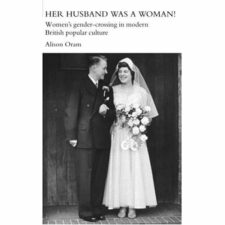During the late nineteenth century, women played a substantial role in the Irish farming economy. Farmwork was gendered and women were associated with tending animals, particularly pigs and poultry, dairying, both milking and creating products for market, and tending the potato patch, as well as ‘domestic’ duties, such as cleaning, preparing food, laundry and childcare. Yet, the need for flexibility on family farms meant that women could be found harvesting, and digging turf for fuel. This became less acceptable in the late-nineteenth-century as the ideals of domesticity pushed women out of the fields, but in many households it remained a financial necessity. Similarly, men could perform the heavier aspects of ‘women’s work’, such as churning butter, while tending food as they sat by the fire seems to have been common.
This flexibility in gender roles should not be exaggerated. In parts of Ireland, men did not milk cows, seeing it as demeaning, and chickens were particularly associated with women, despite attempts by agricultural agencies to promote large-scale, male-run poultry farms. Women were actively engaged with the market, selling the products, mainly eggs and butter, they produced directly. This was disrupted by the rise of co-operative creameries at the end of the century, which made payments to their husbands, ‘the farmer’, to the dismay of many wives, but egg sales remained an important source of money for women well into the twentieth-century. In the later nineteenth century, as social reformers encouraged women to leave the fields, home-based textile industries, such as lace-making and ‘finishing’ linens, were promoted as a suitably domestic form of income and these industries had some limited success.
Women who performed their economic role well gained respect both from their family and from the wider community, reinforcing the legitimacy of their position and their place within the household. John Duff, when being sued for breach of promise of marriage, noted that he had changed his choice of bride as his new intended had, in addition to a dowry of 800l, ‘kept a nice table with plenty on it, and a large decanter of whiskey’. His new bride’s reputation for keeping a good table spoke favourably of her potential as a wife.
In contrast, Mrs Ellen Shanahan of Thurles, who moved into a farmhouse with her husband John and brother-in-law Mickey, found it difficult to make a place for herself. Mickey assaulted her, claiming that her ducks were trespassing on his corn. During the trial for assault, Ellen complained that she was given no access to household resources; her only source of income was her poultry and this too was denied to her. When she was on the stand, her ability to work on the farm was central to the validity of her claims. The defence lawyer asked: ‘Owing to some huff after the honeymoon, you refused to do anything for them, even to cook a meal for them?’ She replied: ‘I did everything I could until they took everything out of the house from me. They left me no handling whatsoever.’ Ellen’s claim to rights on the farm was disputed by the defence lawyer who challenged her work-ethic; in turn, Ellen responded by highlighting that it was the men’s behaviour that caused her problems. While new models of domesticity shaped the form and classification of women’s work on the farm, the relationship between productive labour and women’s power in the household continued to be vital in Irish culture.
Further reading
Joanna Bourke (1993) Husbandry to Housewifery: women, economic change and housework in Ireland, 1890-1914 (Oxford: Clarendon Press).
Mary Cullen (1990) Breadwinners and Providers: women in the household economy of labouring families, 1835-6, in Maria Luddy and Cliona Murphy (Eds) Women Surviving: studies in Irish women’s history in the 19th and 20th centuries (Dublin: Poolbeg), pp. 85-116.
Katie Barclay’s household management skills rival only Mrs Beeton’s. But, as she doesn’t want to make other people jealous, she disguises them and concentrates on writing history.
